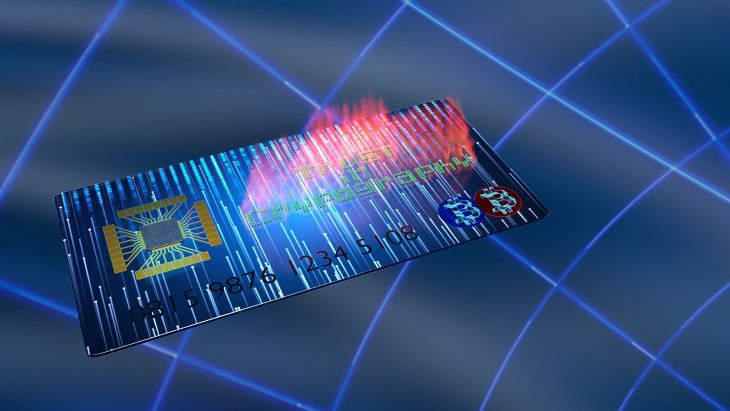The huge payments flow in healthcare in the United States demands that payers and providers constantly look for innovative ways to streamline the payment cycle management process. In 2016, U.S. healthcare spending reached $3.2 trillion annually and it is estimated that as much as one third of that spending was on administration, with a major portion of this down to inefficient billing and payment processes.
To tackle this challenge, U.S. government healthcare regulations have tried to increase the speed of adoption of electronic payments over paper checks. The Affordable Care Act (ACA) mandates all payers support Electronic Funds Transfer (EFT) and the required Electronic Remittance Advice (ERA) to providers on HIPAA-covered transactions. In many cases, however, providers have not enrolled in ACH and cannot process an ERA, so healthcare payers are still printing and mailing hundreds of millions of checks.
The continued use of checks in the 21st Century is staggering when electronic alternatives are available. Ten years ago, even the US Government moved to all-electronic distribution of benefits, reaping billions of dollars in savings. Healthcare is playing catch-up and replacing these inefficient check-based systems must be a priority for payers and providers alike. A variety of solutions are available on the back of an ongoing revolution in electronic payments. Among these are “virtual cards” – a payment method which, despite compelling evidence that it can play a valuable role in streamlining the payments process, has faced resistance from healthcare groups which has even extended to legislative efforts in some states to discourage the use of virtual cards.
This is unfair and self-defeating for an industry plagued by payments inefficiency. It has been argued that the fees associated with virtual cards – the same fees that retailers routinely accept for payments made with credit and debit cards – are too expensive when compared to other payment means. In reality, the costs of virtual cards stack up well alongside ACH transactions for the vast majority of healthcare payments. Furthermore, competition in the provision of electronic payments services is fierce and can and should be leveraged by providers to negotiate lower merchant fees.
Though virtual cards may not be the best payment option in all situations, they can offer fundamental advantages over both ACH and paper checks, particularly when presented by a payer that represents a small percentage of a provider’s patient traffic, or for smaller healthcare providers with fewer IT resources, limited IT budgets, or cash flow issues.
The key to their value for smaller providers lies in the fact that they piggyback on existing payments systems. According to a survey of members conducted by the Medical Group Management Association, 98% of respondents already accept credit and debit cards. Virtual cards use the same technology that supports consumer payment card transactions to make and receive patient responsibility dollars, eliminating the need to establish a parallel payments infrastructure by investing in new technology and software. For payments from payers that represent a small percentage of patient traffic, it may not be cost effective for a provider to enroll in ACH and ERA delivery. For providers that take payments on property and casualty claims (for example, auto insurance or workers’ compensation), they must weigh investments in ACH/ERA technology with the fact many payers do not support ERA and are not required to issue ACH payments under applicable law. In these scenarios, the virtual card is an excellent replacement for checks, providing a fast, secure and reliable payment option for the provider.
There are secondary advantages to virtual cards, too. The electronic process avoids the challenges associated with lost or stolen paper checks, and payments are quicker and more easily reconciled than ACH. Security is another area in which virtual cards offer distinct benefits. Healthcare providers are increasingly aware of the challenges to protect medical or payments data. Unlike ACH, providers do not have to provide vulnerable bank account details to use virtual cards (which also removes the need for lengthy and costly enrollment of providers).
If fraud is suspected on a card transaction, the card network processes offer more efficient, effective and expeditious means of resolving transactions than typically found with ACH and check fraud. If the payment is a Straight-Through-Processing (STP) payment, the funds are directly deposited into the provider’s merchant bank account, and there is no possibility of diversion. In an era of data breaches and cybersecurity concerns, some see this as a significant advantage.
The important thing is that virtual cards be allowed to take their place alongside other payment means for use in Healthcare. A broad array of payment options is consistent with the Health Insurance Portability and Accountability Act of 1996 (HIPAA), which recognizes the diversity in the healthcare industry and that different standards may be necessary for different segments.
While no payment method is perfect, virtual card technology offers a way for payers to significantly reduce administrative costs through efficiency, while giving providers a payment alternative that is fast, secure, accurate, and easy to use.
Necessary streamlining of healthcare payments in the U.S. system can only be achieved by embracing innovation and rejecting a mentality that demands one-size fits all.











